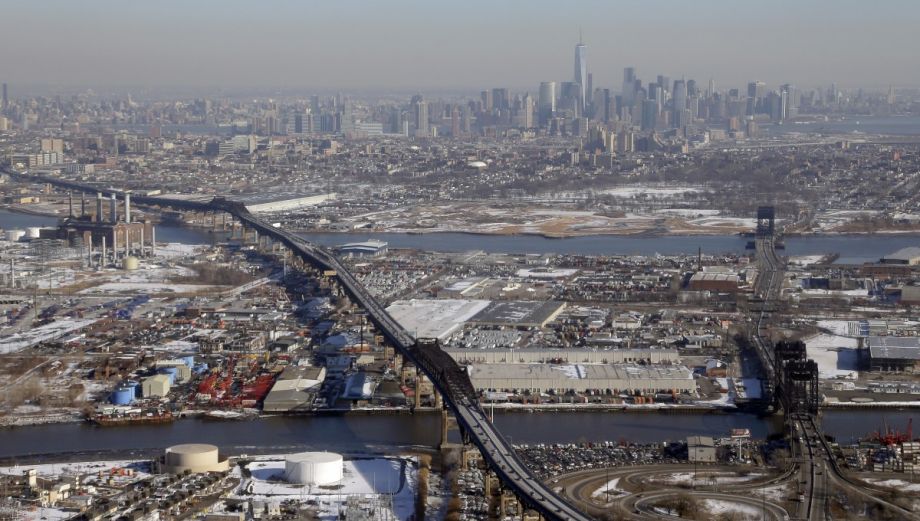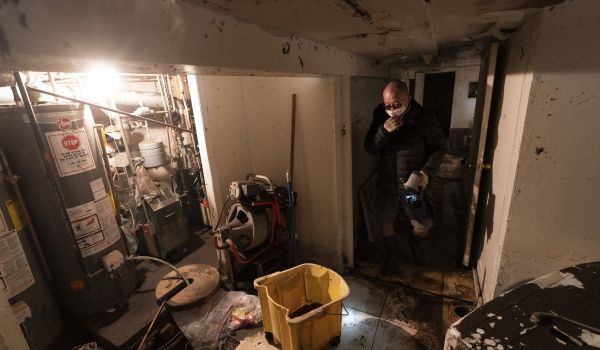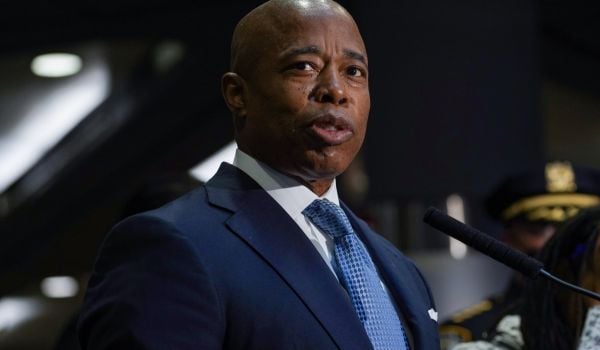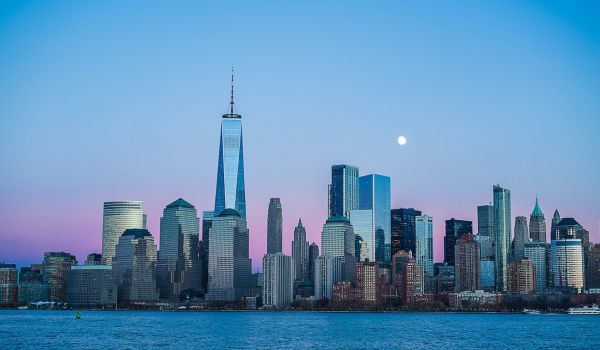Jersey City, New Jersey, sucker punched in 2012 by Hurricane Sandy, announced in 2014 a $2 billion “coastal defense plan” that would extend the city’s coastline into the water with 200 feet of infill (a la Manhattan’s Battery Park City) — and then seal it off with a 2-mile-long sea wall.
It was the kind of large-scale restructuring of the Earth’s surface that you’d want to coordinate with your neighbors. Yet there was Hoboken, right next door, drawing up fortification plans of its own. Called “Resist, Delay, Store, Discharge,” Hoboken’s $230 million concept consisted of sponge-like parks, flood walls, pumps and underground cisterns — a different strategy altogether.
The disconnect wasn’t just inefficient, it was dangerous. “You cannot do this in a town-by-town approach,” warned the director of the Sierra Club New Jersey. “One town’s wall will be the next town’s bigger flood.” And yet, five years after Sandy made landfall in Brigantine, New Jersey, the region’s fragmented flood-proofing strategies have no organizing force working to align them. This glaring omission is highlighted in a report issued last week by the Regional Plan Association (RPA), which calls for a Regional Coastal Commission (RCC) to sync up sea-level-rise mitigation across New York, New Jersey and Connecticut.
The proposal envisions the RCC as a clearinghouse ensuring that individual strategies enhance the overall flood-proofing goals of the region as a whole. It would do this by creating common standards, coordinating local initiatives, prioritizing funding, and bringing into line the various policies of different municipalities and states. In essence, it would work the way water does: by flowing across boundaries and borders to form a cohesive body irrespective of city limits.
Amazingly, nothing even close to this currently exists. The RPA’s report puts it bluntly: “There is neither a plan nor a budget for adaptation in the region.” But a quick glance around should make that obvious. Some 10,000 area homes will be inundated as early as the 2030s, as will 21 percent of public housing units by 2050. There’s a galaxy of unrelated initiatives, proposals and task forces tackling these problems in isolation, yet zero overarching plan to deal with it in a unified manner. Mark Lubell, who authored a report on a similar lack of climate change coordination in the San Francisco Bay Area, summed it up as a sense that “everybody’s involved, but nobody is in charge.”
Lubell’s report, “The Governance Gap,” was released this year and reveals the Bay Area’s “critical need for shared learning, coordination and planning” for rising sea levels. Interestingly, many of its recommendations focus on regionalizing the area’s response to sea level rise without immediately establishing an entirely new governing authority. The reason for this is simple: Some goals can be “more quickly implemented than creating a new agency,” and time is of the essence in a region where inundation is expected to begin by 2050.
This is a potential pitfall for the RCC, as well. Any push to create a new multistate, Port Authority-style bureaucracy is likely to face resistance. Robert Ceberio knows this well. For nine years he ran New Jersey’s Meadowlands Commission, the planning authority for the 14 cities scattered across the state’s 30-square-mile marshland. “You can’t get much lower than the Meadowlands in terms of elevation,” says Ceberio. It’s basically one big bathtub that was once a dumping ground for industrial waste. As the region urbanized, its value as a real estate frontier outpaced its worth as a landfill, and the Meadowlands Commission was formed in 1969 to manage development while preserving the ecosystem. “We took very serious steps to do flood control,” says Ceberio, “because flood water doesn’t know municipalities. It doesn’t know Democrat or Republican. It only knows the path of least resistance.”
Despite this, the commission had to earn the trust of the cities over which it presided. “All too often, municipalities look at a regional authority as the enemy,” he says. “Our culture was quite different. We understood that the municipalities were our constituents, and we treated them that way.” When heavy rains threatened any of the Meadowlands cities, the commission worked with them on advance preparations. It financed environmental studies, employed a staff of full-time engineers and created the Meadowlands Environmental Research Institute to examine ecological issues affecting the area. “We had the financial capacity to work on regional projects that might impact three or four towns with one structure,” says Ceberio, adding that the commission spent about $15 million on flood control measures in a five-year period.
The commission’s mandate to manage flood-proofing strategies for the Meadowlands makes it a microcosm of what the RCC could be for the tri-state area. Perhaps the biggest benefit of such a regionalized effort — one the RPA references directly in its new report — is a governance structure “independent from political cycles and direct political interference.” Nothing derails climate change mitigation like a politician running for office, and a Regional Coastal Commission could theoretically act unfettered by such concerns.
But perhaps the RCC’s best chance to see the light of day lies in the report’s first rule for implementation: “A clear, relatively narrow mission is essential.”
The region in question has already made notable strides in preparing for the next Sandy, and though there’s clearly much to be done, its efforts need a road map more than an overhaul. For that reason, a coastal commission’s goal would be less to disrupt and more to cohere and connect, and ensure good sea walls make good neighbors.

Will Doig was formerly Next City’s international editor. He's worked as a columnist at Salon, an editor at The Daily Beast, a lecturer at the New School, and a communications staffer at the Open Society Foundations. He is the author of High-Speed Empire: Chinese Expansion and the Future of Southeast Asia, published by Columbia Global Reports.
















